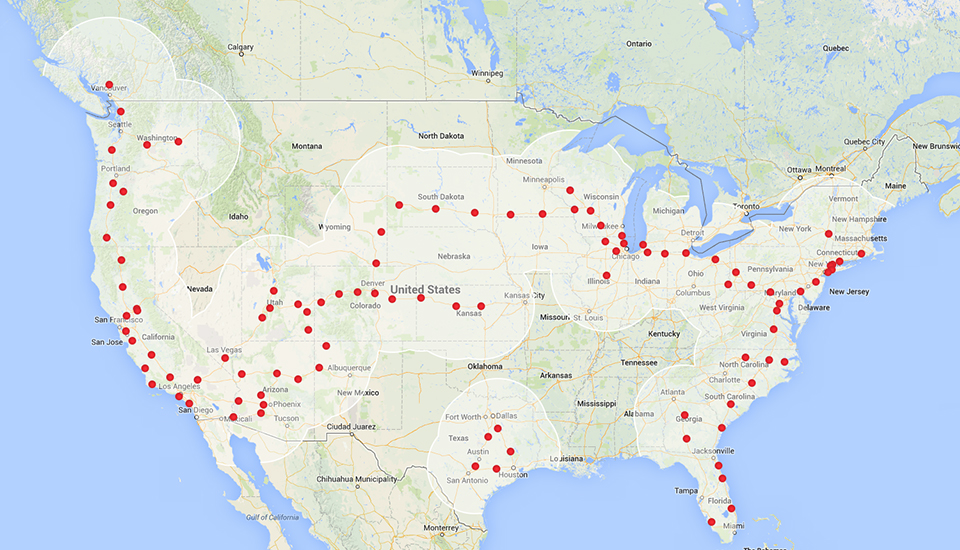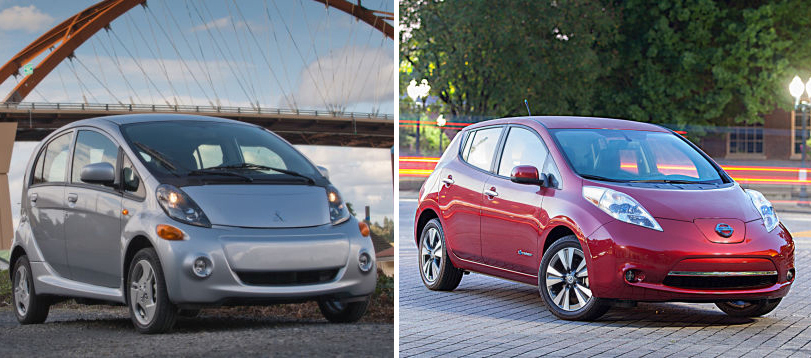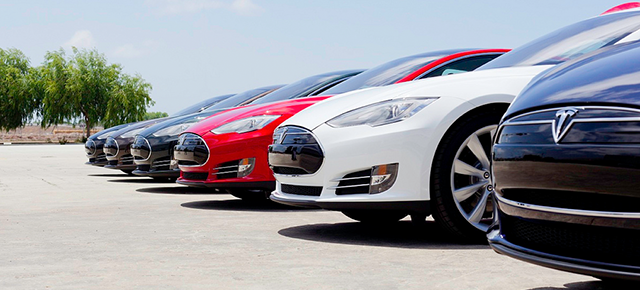Tesla’s next electric car officially has a name: The Model 3. It seems like an all-around average sedan, no crazy up-swinging falcon doors or other outlandishness. Even the $US35,000 price is pedestrian. It’s also what could make it as important to automotive history as the Model T.
To understand why that price tag is such a game-changer, you don’t need to look much further than Tesla’s current lineup: a two-seat convertible for $US100,000, and a luxury sedan for $US70,000. These are niche vehicles with limited markets, and while Tesla has exceeded its own sales targets for the less pricey Model S, that still only amounts to a paltry 23,000 cars sold in 2013. Toyota, by contrast, sold that many Camrys in the US in the first 20 days of last year.
But a $US35,000 Tesla? That’s Toyota Avalon or Chevy Impala money. A sub-$US40,000 car isn’t a plaything for George Clooney; it’s a daily driver your kid’s basketball coach could buy. And it knocks down the last, most difficult hurdle that’s prevented electric cars from truly hitting the mainstream.
Building a Grid
But wait! you say. The Nissan Leaf prices in the mid-twenties. The Mitsubishi i-MiEV compares favourably on price to a carton of smokes. You’re right, of course. But you’re forgetting about one crucial point: infrastructure.
How do you charge a Leaf or a i-MiEV? You plug it into your garage, or, if you live in a progressive city and the parking gods are smiling, you juice up at a charger-equipped parking spot. There aren’t a whole lot of those around, and with both the Leaf and the i-MiEV averaging sub-160km battery range, you’re stuck pretty close to home.
Truthfully, that’s perfectly acceptable for 90 per cent of the driving that 90 per cent of Americans do. But that invisible extension cord feels mighty short when your neighbour’s fuel hog can cruise back and forth across the country as many times as its driver can afford. The Model 3, meanwhile, has an range of more than twice what its low-cost competitors can achieve.
Tesla drivers don’t quite have the same ubiquitous network as drivers of dino-juice cars, but that’s changing. Tesla currently has 102 Supercharger stations across North America, where drivers can top up their batteries in around 20 minutes, for free. The company promises to cover 80 per cent of the US population by the end of this year. Tesla drivers have completed coast-to-coast road trips by strategically stringing together Supercharger locations. It takes some serious planning, but it’s possible — and a lot more convenient than finding somewhere to charge your Leaf or i-MiEV overnight every 160km.

Current Tesla Supercharger locations in the US. The white bubbles show the typical range a Model S driver can reach on a full charge.
Now imagine that, instead of selling a few thousand expensive luxury sedans every year, Tesla sold tens of thousands of electric cars that regular folks can afford. Electric cars with a 320km range that do the same job as a Honda Accord or Volkswagen Passat, that you can charge up at a nearby Supercharger station for free. That makes electric cars a lot more compelling to the average buyer — and gives Tesla even more reason to start filling in those bare zones on the Supercharger map.
Not to mention that, with Tesla opening up its patented battery tech to anyone who wants it, you might someday be able to charge that future electric Honda or VW or whatever at a Supercharger station. Plenty of Supercharger customers, and plenty of reasons to build one on every street corner and off-ramp.
An Electric Car That Doesn’t Look Like an Appliance
In the automotive world, style is just as important as infrastructure. Buyers shun practicality when it comes in a plain, no-attitude wrapper; the 20-year popularity of SUVs was built almost entirely on fear of the minivan’s emasculating effects. How does that affect electric cars? Just look: the Nissan Leaf resembles an overgrown dust buster, and the Mitsubishi i-MiEV looks like a damned golf cart when parked alongside the average grocery-getter.

Mitsubishi i-MiEV on the left, Nissan Leaf on the right. Not pictured: elegance, beauty, attitude or style.
Compare those rolling cough drops to the alleged Model 3 renders published by Auto Express. Even if the real Model 3 doesn’t look exactly like those images, it’s sure to have the same kind of Tesla design language you see here. That sultry, delicious design language.
Fit To a T
It’s no coincidence how Tesla timed this. First it brought out the Roadster, a fast but somewhat shoddy first attempt at an electric car. Next came the Model S: refined and well-developed enough that both Motor Trend and Automobile Magazine named it 2013’s car of the year. All the while, Tesla built an infrastructure of charging stations that made these expensive machines more real-world friendly.
Now the foundation has been laid. The infrastructure is sound and expanding. The brand is universally known, an American success story helmed by a geek-culture hero with larger-than-life pockets. Tesla is poised to go from a household name to an appliance in every household, and the Model 3 is how that happens.
Cranking out commuter cars for the stable middle class doesn’t seem like a rockstar move when you’re building rockets and picking out grave sites on Mars. But Musk knows that an affordable, practical electric car will do for 21st century motoring what Henry Ford’s affordable, practical petrol-powered car did for 20th century roads.
The similarities to the Model T are worth pointing out. Ford didn’t invent the car, and by 1908 when the first Model T rolled off the assembly line, four-wheeled horseless carriages were well known. But those cars were unattainably costly for average folk, and roads were still built to convey horses and carriages. The few cars that did ply America’s byways were powered by anything from petrol to electricity or even steam.
Fast forward to 1927: the last Model T rolls out of the Dearborn, Michigan plant, into a world where roads are designed for automobiles and petrol flows from roadside pumps across the land. There’s plenty of competition among makers of affordable cars — competition that sprang up in response to Ford and the Model T.
Our grandkids will still learn about the Model T, how it permanently changed the way America looked and functioned. But I’m betting they will also learn about another car, one associated with the seismic shift that turned us away from dinosaur-powered vehicles. I’m betting they will be talking about the Model 3.
Picture: Flickr
